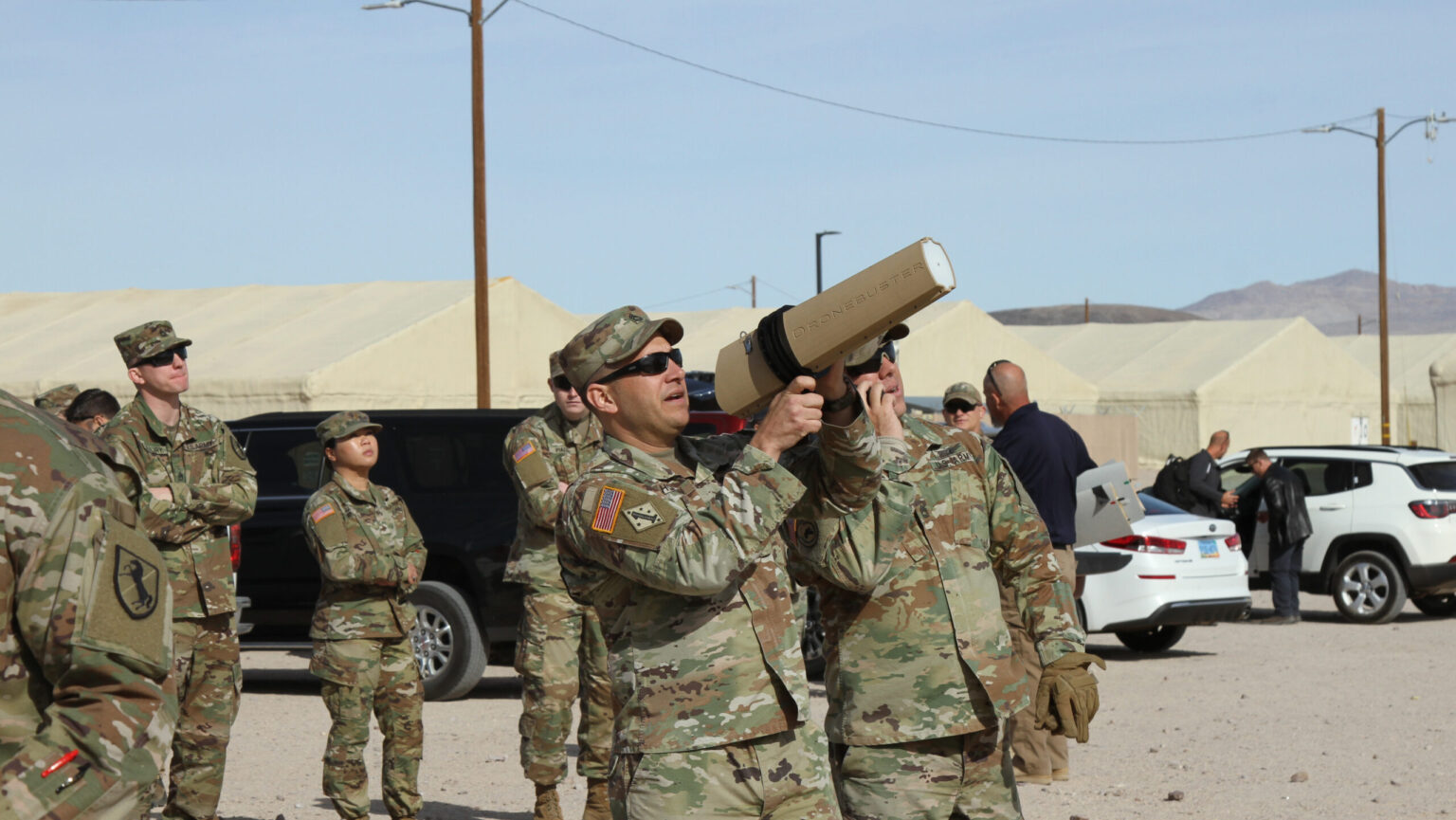A senior trainer fires a Dronebuster Electronic Warfare System at the Counter Unmanned Aircraft System Training in the Rotational Unit Bivouac Area on January 30, 2020. U.S. ARMY
THE WATCH STAFF
U.S. Northern Command (USNORTHCOM) is synchronizing responses to counter unmanned aerial system (cUAS) incursions in the United States after a series of incidents near military installations in recent months. USNORTHCOM has alerted base commanders across the United States of a new standard operating procedure (SOP) when small unmanned aerial systems (sUAS) are sighted: Notify USNORTHCOM.
The directive was issued in March or April 2025, a senior Pentagon official told Congressional lawmakers recently, according to Breaking Defense, a military affairs news site. The classified SOP’s details have not been released, said Vice Director for Operations on the Joint Staff Rear Adm. Paul Spedero in an April 29 appearance before the U.S. House Oversight Committee’s Military and Foreign Affairs Subcommittee.
Many of the incursions reported over U.S. airspace are likely the work of hobbyists, but some believe the evidence shows that adversaries also have deployed UAS to collect intelligence on military facilities. Committee Chairman Rep. William Timmons asserted in his opening remarks that the incursions are evidence of a “coordinated effort by our adversaries to collect valuable intelligence and surveillance of some of our most sensitive military equipment.” Later in the hearing, Spedero acknowledged this possibility, saying, “As was brought up by this committee, and we agree with, our adversary has demonstrated that they will use this type of activity for unauthorized surveillance, for espionage.” He did not identify the adversaries.
To defend against such incursions, USNORTHCOM invited defense firms in October 2024 to participate in a demonstration, Falcon Peak, which was limited to non- and low-kinetic mitigation techniques to stop sUAS. For example, one demonstration featured a cUAS disabling a drone by dropping a net over it and then parachuting both machines to the ground. “By all indications, sUAS will present a safety and security risk to military installations and other critical infrastructure for the foreseeable future. Mitigating those risks requires a dedicated effort across all federal departments and agencies, state, local, tribal and territorial communities, and Congress to further develop the capabilities, coordination and legal authorities necessary for detecting, tracking and addressing potential sUAS threats in the homeland,” said USNORTHCOM commander Gen. Gregory Guillot at the time, according to Breaking Defense.
Legislative tweaks to federal law regulating military response to drone incursions have also been proposed by the U.S. Department of Defense (DOD). Changes to Section 130i of the Federal Code would expand the number of DOD facilities authorized to engage sUAS. Currently, some highly sensitive bases like Luke Air Force Base (AFB) in Arizona — which trains F-35 pilots — don’t have that ability, Spedero told committee members.
Guillot, in his testimony earlier in April before the House Armed Services Committee, submitted written remarks expanding on the new policy, inaugurated in November 2024, for USNORTHCOM to serve as the lead agency in defending the United States from sUAS incursions. “USNORTHCOM will play a critical role in an enduring whole-of-government effort to protect people, infrastructure, aircraft, and facilities from malign sUAS incursions. This effort will require investment in robust and evolving mitigation technologies suitable for use in the United States, alignment with interagency and industry partners, and policy and statutory changes that balance safety, privacy, and defensive requirements,” he said.

